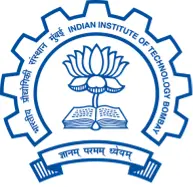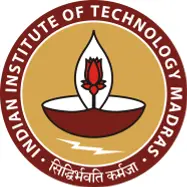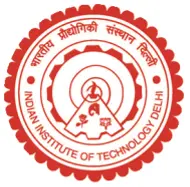Discover global hiring strategies from leading recruitment platforms
Learn more
Speed up your global expansion! Expand smartly in 150+ countries with the #1 rated EOR globally.
Explore Multiplier EOR

Your guide to the employment landscape, working customs and local labor laws in India.
Capital
New Delhi
Currency
Indian Rupees (INR)
Languages
Hindi, English
GDP per Capita
$2,802.53
Employer Tax
15.25%
Payroll Frequency
Monthly
India’s developing economy has led to the country’s success in the global market. They are projected to be one of the world’s most significant economic powers due to their successful partnerships and investments. Since the 2000s, their upward economic trajectory has lifted more than 90 million citizens from poverty and has provided jobs for the working population.
Major economic hubs:
New Delhi, Mumbai, Calcutta, Chennai
Skills in demand:

Local: 1
World: 519

Local: 2
World: 526

Local: 3
World: 871

Local: 4
World: 897

Local: 5
World: 945
Naukri, Indeed, FreshersLive, monsterindia.com , shine.com, workindia
109,200,000
Top Local Job Boards:
Top Local Job Boards
Number of LinkedIn users:
Number of LinkedIn users
Top Recruitment Agencies:
Some top jobs found in India and their monthly salary are listed below:
| Job Title | Average Monthly Salary (INR) | Average Monthly Salary (USD) |
| Financial Manager | 62,700 INR | 765 USD |
| General Manager | 55,400 INR | 676 USD |
| Business Development Manager | 49,900 INR | 609 USD |
| Business Analyst | 39,400 INR | 481 USD |
| Financial Analyst | 40,400 INR | 493 USD |
| Project Manager | 35,600 INR | 434 USD |
India is filled with world class employees and highly skilled professionals. But before tapping into the country’s talent pool, employers must first navigate their way through the employment laws and regulations. The succeeding sections should help you with the basics when onboarding workers from India.
In India, employee contracts must be in a language understood by both contracting parties. Contracts are generally in English, provided that both parties understand it.
The Probation Period for Indian employees can last up to 6 months.
India has 3 national holidays. Apart from that, the country also follows some government holidays as listed below, some of which may vary depending on the location.
| Date | Name | Type |
| 1 Jan | New Year’s Day | Restricted Holiday |
| 13 Jan | Lohri | Restricted Holiday |
| 14 Jan | Makar Sankranti | Restricted Holiday |
| 15 Jan | Pongal | Restricted Holiday |
| 17 Jan | Guru Govind Singh Jayanti | Restricted Holiday |
| 25 Jan | Hazarat Ali’s Birthday | Restricted Holiday |
| 26 Jan | Republic Day | Gazetted Holiday |
| 14 Feb | Vasant Panchami | Restricted Holiday |
| 19 Feb | Shivaji Jayanti | Restricted Holiday |
| 24 Feb | Guru Ravidas Jayanti | Restricted Holiday |
| 6 Mar | Maharishi Dayanand Saraswati Jayanti | Restricted Holiday |
| 8 Mar | Maha Shivaratri/Shivaratri | Restricted Holiday |
| 24 Mar | Holika Dahana | Restricted Holiday |
| 25 Mar | Holi | Gazetted Holiday |
| 25 Mar | Dolyatra | Restricted Holiday |
| 29 Mar | Good Friday | Gazetted Holiday |
| 31 Mar | Easter Day | Restricted Holiday |
| 5 Apr | Jamat Ul-Vida (Tentative Date) | Restricted Holiday |
| 9 Apr | Chaitra Sukhladi | Restricted Holiday |
| 9 Apr | Ugadi/Gudi Padwa | Restricted Holiday |
| 11 Apr | Ramzan Id/Eid-ul-Fitar (Tentative Date) | Gazetted Holiday |
| 13 Apr | Vaisakhi | Restricted Holiday |
| 14 Apr | Mesadi / Vaisakhadi | Restricted Holiday |
| 17 Apr | Rama Navami | Gazetted Holiday |
| 21 Apr | Mahavir Jayanti | Gazetted Holiday |
| 8 May | Birthday of Rabindranath | Restricted Holiday |
| 23 May | Buddha Purnima/Vesak | Gazetted Holiday |
| 17 Jun | Bakrid/Eid ul-Adha (Tentative Date) | Gazetted Holiday |
| 7 Jul | Rath Yatra | Restricted Holiday |
| 17 Jul | Muharram/Ashura (Tentative Date) | Gazetted Holiday |
| 15 Aug | Independence Day | Gazetted Holiday |
| 15 Aug | Parsi New Year | Restricted Holiday |
| 19 Aug | Raksha Bandhan (Rakhi) | Restricted Holiday |
| 26 Aug | Janmashtami | Gazetted Holiday |
| 7 Sep | Ganesh Chaturthi/Vinayaka Chaturthi | Restricted Holiday |
| 15 Sep | Onam | Restricted Holiday |
| 16 Sep | Milad un-Nabi/Id-e-Milad (Tentative Date) | Gazetted Holiday |
| 2 Oct | Mahatma Gandhi Jayanti | Gazetted Holiday |
| 10 Oct | Maha Saptami | Restricted Holiday |
| 11 Oct | Maha Navami | Restricted Holiday |
| 11 Oct | Maha Ashtami | Restricted Holiday |
| 12 Oct | Dussehra | Gazetted Holiday |
| 17 Oct | Maharishi Valmiki Jayanti | Restricted Holiday |
| 20 Oct | Karaka Chaturthi (Karva Chauth) | Restricted Holiday |
| 31 Oct | Naraka Chaturdasi | Restricted Holiday |
| 31 Oct | Diwali/Deepavali | Gazetted Holiday |
| 2 Nov | Govardhan Puja | Restricted Holiday |
| 3 Nov | Bhai Duj | Restricted Holiday |
| 7 Nov | Chhat Puja (Pratihar Sashthi/Surya Sashthi) | Restricted Holiday |
| 15 Nov | Guru Nanak Jayanti | Gazetted Holiday |
| 24 Nov | Guru Tegh Bahadur’s Martyrdom Day | Restricted Holiday |
| 24 Dec | Christmas Eve | Restricted Holiday |
| 25 Dec | Christmas | Gazetted Holiday |
| Type of Leave | Time Period | Mandatory |
| Annual Leave | 12 days | Yes |
| Sick Leave | 14 days | Yes |
| Maternity Leave | 26 weeks | Yes |
Leave Compliance
Payroll cycle
The payroll cycle in India is monthly.
Minimum wage
Minimum wage in India varies per state and with industry associated. However, the national floor level minimum wage across the country is 178 INR per day.
Overtime pay
The standard working hours in India are 9 hours per day and 48 hours per week. Including overtime, the maximum working hours must not exceed 60. Furthermore, the overtime hours per quarter must not exceed 50. Employers must compensate for the overtime at 200% of the regular hourly rate.
| Type of contribution | Contribution |
| EPF + EPS | 12% |
| ESI | 3.25% |
| Total cost on employer | 15.25% |
| Type of contribution | Contribution |
| EPF | 12% |
| ESI | 0.75% |
| Total cost on Employee | 12.75% |
| Income tax slab | Old Regime | New Regime | ||
| Individuals, HUF & NRIs under 60 years | Individuals & HUF between 60 to 80 years old | Individuals & HUF above 80 years old | All individuals & HUF | |
| Up to INR 2,50,000 | 0% | 0% | 0% | 0% |
| INR 2,50,001 – INR 3,00,000 | 5% | 0% | 5% | 5% |
| INR 3,00,001 – INR 5,00,000 | 5% | 5% | 0% | 5% |
| INR 5,00,001 – INR 7,50,000 | 20% | 20% | 20% | 10% |
| INR 7,50,001 – INR 10,00,000 | 20% | 20% | 20% | 15% |
| INR 10,00,001 – INR 12,50,000 | 30% | 30% | 30% | 20% |
| INR 12,50,001 – INR 15,00,000 | 30% | 30% | 30% | 25% |
| Above INR 15,00,000 | 30% | 30% | 30% | 30% |
Health and education cess is levied at 4% of the income tax and surcharge.
VAT in India is referred to as the Goods and Services Tax (GST). Rates range from 5% to 28%, depending on the goods and
services.
The Indian government has set statutory benefits for their employees to ensure that they get the best out of their employment. Below are some of the benefits:
In India, the termination process may vary from one employer to another and mostly follows the terms indicated in the employment contract.
The notice period for employees under probation is up to 30 days. For regular employees, notice period will be up to 3 months.
Severance Pay in India varies based on duration of employment, performance and salary. Below are the rates:
| Employee Classification | Severance Pay |
| Workman | 15 days’ worth of average pay for each year worked |
| Workman of a factory, mine or plantation with 100+ workers | 15 days’ worth of average pay for each year worked |
| Non-worker | Determined by the employment contract |
| Employee (workman or non-worker) that is dismissed due to misconduct | No severance pay |
Foreign employees in India must secure a work visa to legally work in the country. The visa’s validity may vary from 6 months to 5 years. For investors looking into operating their business in the country, they must apply for a business visa.
Expand globally and hire talent in 150+ countries without having to set up an entity. Use Multiplier's Employer of Record to manage the complete employee experience while having the flexibility to enter new markets.

Overtime Pay
Minimum Wage
Overtime Pay
Visa and Immigration
By use case
By team
By company size